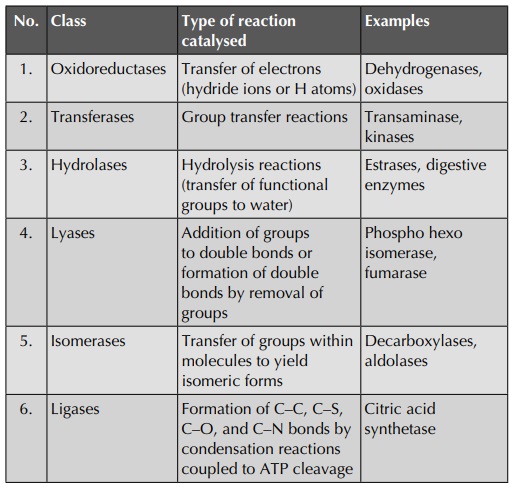Enzymes and Protein Drugs
| Home | | Pharmacognosy |Chapter: Pharmacognosy and Phytochemistry : Enzymes and Protein Drugs
Enzymes are organic catalysts produced in the body by living organisms. They perform many complex chemical reactions that make up life processes. Enzymes are lifeless and when isolated, they still exert their characteristic catalytic effect.
ENZYMES
Enzymes are organic catalysts produced in the body by living
organisms. They perform many complex chemical reactions that make up life
processes. Enzymes are lifeless and when isolated, they still exert their
characteristic catalytic effect. Their chemical composition varies, and they do
show several common properties. They are colloids, soluble in water and dilute
alcohol but are precipitated by concentrated alcohol. Most enzymes act best at
temperatures between 35 and 40°C; temperatures above 65°C, especially in the
presence of moisture, destroy them, whereas their activity is negligible at
0°C. Certain heavy metals, formaldehyde, and free iodine retard the enzymes
activity. Their activity is markedly affected by the pH of the medium in which
they act or by the presence of other substances in this medium. They are highly
selective in their action.
The enzymes are proteins having molecular weight from about
13,000 to 8,40,000. At present they are divided according to their action by a
complex system established by the Commission on Enzymes of the International
Union of Biochemistry. Six major classes are recognized; each has 4 to 13
subclasses, and each enzyme is assigned a systematic code number (B.C.)
composed of 4 digits. The major classes are given in table below.
Enzymes are found in combination with inorganic or organic
substances that have an important part in the catalytic action. If these are
nonprotein organic compounds, they are known as coenzymes. If they are
inorganic ions, they are referred to as activators. Coenzymes are integral
components of a large number of enzyme systems. Several vitamins (thiamine,
riboflavin, nicotinic acid) have a coenzymatic function.
Enzymes are obtained from plant and animal cells and many
have been purified. They are used as therapeutic agents and as controlling
factors in certain chemical reactions in industry. Pepsin, pancreatin, and
papain are used therapeutically as digestants. Hyaluronidase facilitates the
diffusion of injected fluids. Streptokinase and streptodornase dissolve
clotted blood and purulent accumulations. Zymase and rennin are used in the
fermentation and cheese industries; and penicillinase inactivates the various
penicillins.
Table : International classification of enzymes

The names used to designate enzymes usually end in -ase or -in. The important enzymes are given hereunder.
Properties of Enzymes
1. Enzymes are sensitive to heat and
are denatured by excess heat or cold, i.e. their active site becomes
permanently warped, thus the enzyme is unable to form an enzyme substrate
complex. This is what happens when you fry an egg, the egg white (augmentin, a
type of protein, not an enzyme), is denatured.
2. Enzymes are created in cells but are
capable of functioning out side of the cell. This allows the enzymes to be
immobilized, without killing them.
3. Enzymes are sensitive to pH, the
rate at which they can conduct reaction is dependent upon the pH of where the
reaction is taking place, for example, pepsin in the stomach has an optimum pH
of about 2, whereas salivary amylase has an optimum pH of about 7.
4. Enzymes are reusable and some
enzymes are capable of catalysing many hundreds of thousands of reactions, for
example, catalase working on hydrogen peroxide, try putting some liver into
hydrogen peroxide.
5. Enzymes will only catalyse one
reaction, for example, invertase will only produce glucose and fructose, when a
glucose solution is passed over beads of enzyme.
6. Enzymes are capable of working in
reverse, this act as a cut off point for the amount of product being produced.
If there are excess reactants, the reaction will keep going and be reversed, so
that there is no overload or build up of product.
